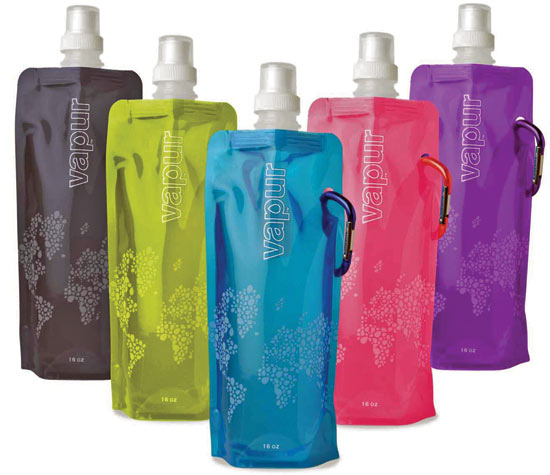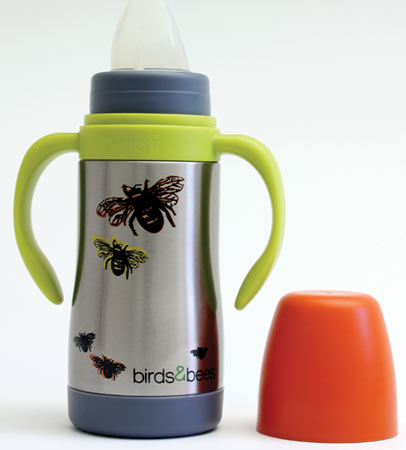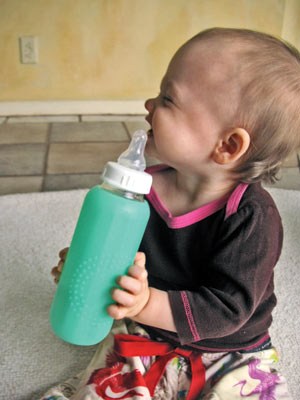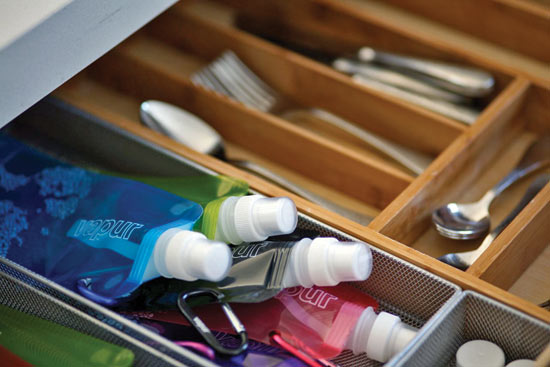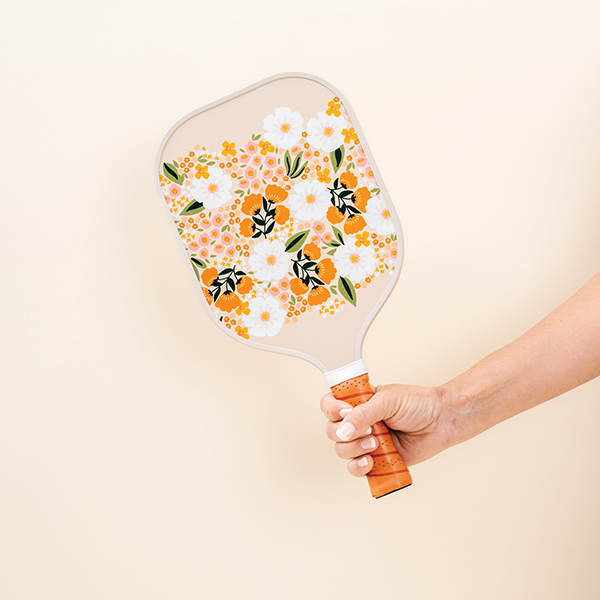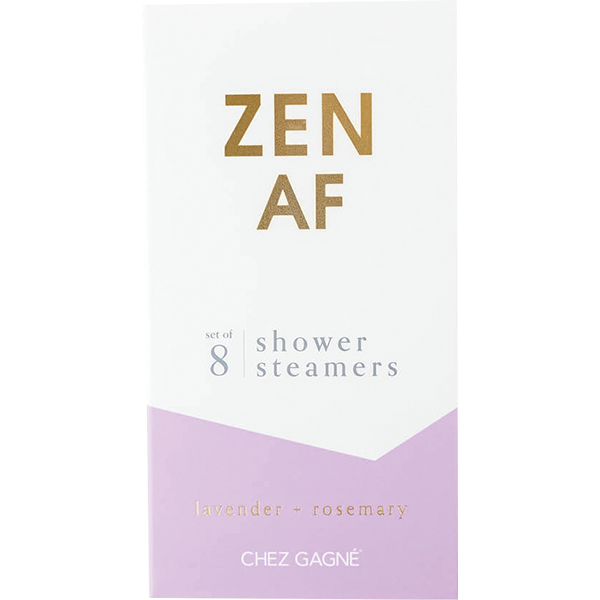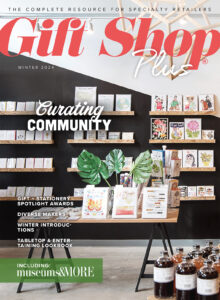Green Message in a Bottle
Health and environmental concerns work in synergy to drive the demand for reusable bottles. Find out what’s new in the category and what your customers are looking for.
In gyms, on public transportation, in airports, in boardrooms, and in homes all around the country, bottled water is ubiquitous. According to Bottled Water: Global Industry Guide, in 2011 the bottled water market will have increased 41.8 percent since 2006. That projected increase flies in the face of warnings about health concerns and the environmental impacts of discarded plastic water bottles. According to Food and Water Watch, “bottled water production and transport uses as much as 2,000 times more energy than it takes to produce tap water.” In addition it takes “more than 17 million barrels of oil—enough to fuel 1 million cars for a year” to produce the plastic water bottles sold annually in the United States.
From stainless steel and aluminum bottles to the foldable “Anti-Bottle” from Vapur, there is no excuse for not considering the value of a reusable bottle. And your customers are increasingly doing just that.
Bottling opportunities
Michael Aaron is president of Greensender in Maplewood, NJ, a company that laser engraves bottles to offer personalization for individuals and companies. “Ten years ago nobody was walking into corporate meetings with a bottle of water, now everybody around the table is,” says Aaron.
Nick Ogden was one of those people, nursing a bottled water drinking habit that eventually led to the launch of his company, Isabella Water, in 2010. Isabella’s stainless steel bottle is unlined, BPA-free and 100 percent recyclable. Prior to starting the company, Ogden worked in the private equity real estate industry and traveled “all the time,” he says. During his travels he spent time in towns like Portland and Boulder, “where everyone carries reusable water bottles” and became aware of the concerns related to disposable bottles. He decided to bring the reusable bottle concept to the South and the Northeast where, he says, these options were not as prevalent.
Of course, it is the very convenience of bottled water that leads to its purchase. After all, toting around a reusable bottle is not always a viable option. Vapur’s “Anti-Bottle” addresses that issue. Brent Reinke is managing director and co-founder of Vapur, a Westlake Village, CA-based company that produces foldable, reusable water bottles that can be rolled, folded or flattened for easy transport.
What drives demand
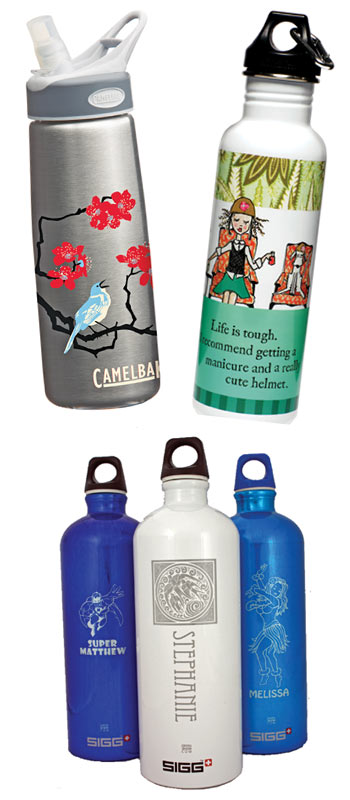 Reinke says the demand for alternatives to plastic water bottles is decidedly on the rise. This has primarily been fueled by an increased awareness of the environmental impact of single-use bottles. In addition, he notes: “They have also become a fashion statement that tells people, ‘I’m an active person who cares about the planet.'”
Reinke says the demand for alternatives to plastic water bottles is decidedly on the rise. This has primarily been fueled by an increased awareness of the environmental impact of single-use bottles. In addition, he notes: “They have also become a fashion statement that tells people, ‘I’m an active person who cares about the planet.'”
The recession has also been a contributing factor as people realize the cost savings afforded by tap water.
Much-publicized health risks have also been a strong factor in driving sales of reusables. “Almost everyone we talk to is concerned about the materials used to make plastic water bottles,” says Reinke. BPA is perhaps the most talked-about concern. BPA, or bisphenol-A, is a chemical found in many types of plastics that has been linked to a range of negative health effects. Today, disposable water bottles don’t contain BPA, says Reinke. Polyethylene terephthalate (PET) is another controversial substance often used in the manufacture of single-use bottles.
Even as consumers look for alternatives to disposal plastic bottled water, they can be challenged to find the same convenience and features that they’ve become accustomed to while navigating the often dizzying claims and counterclaims about risks that may be associated with reusable options.
Some reusable options are not completely off the hook either when it comes to health issues. Dianne Martz is with Sustainable Life Solutions, a retailer of sustainable living products, including reusable bottles, in Bolton, MA. “Consumers like the notion of reusable, but many don’t know the factors to consider when selecting a reusable bottle,” says Martz. “Many don’t realize that there is a difference between aluminum and stainless steel and that aluminum bottles are lined with plastic-based linings.” Some metal bottles do have BPA linings, a fact that was made public a couple of years ago.
Brandon Silveira is with Envirosax, a company that has enjoyed enormous success with its reusable bags, and which recently ventured into the reusable bottle market with the introduction of Envirosax Aqua, a designer reusable water bottle.
“It’s pretty much impossible with the linings and the lids to get a product that is 100 percent BPA-free,” says Silveira. Envirosax advertises their bottles as “BPA-safe,” he says. They test at two parts/billion which, he says, is “well, well below FDA regulatory standards.” But confusion reigns, he says, even among those in the industry, some of whom are not entirely forthcoming he notes.
The confusion, lack of information, and lack of industry standards require wholesalers and retailers to spend time educating and informing consumers—and each other.
Essential education
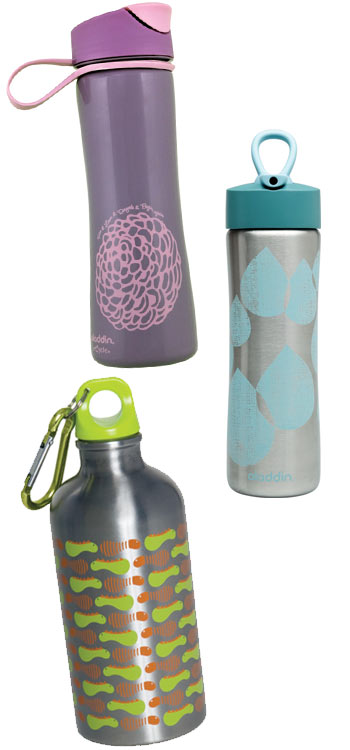 Wholesalers say the key to selling their products is reaching out to, educating and building relationships with retailers.
Wholesalers say the key to selling their products is reaching out to, educating and building relationships with retailers.
Allison Tryk is with EarthLust, a California-based company that produces stainless steel bottles with distinctive designs. For retailers, point-of-sale information is important, says Tryk. This might include facts about the environment as well as descriptions of the product and what it’s made of.
Stacey Feeley is the founder of Silikids, which was launched in 2006 by two friends and mothers concerned about the use of toxic materials in children’s products. Silikids bottles are silicone-sleeved glass bottles offered as an alternative to plastic. Working one-on-one with retailers has been a key part of Silikids’ educational outreach, she says.
“We are a smaller company, [and] we really believe that working with the boutiques to sell the products the best way they can is key for us,” says Feeley.
Education can also take a more direct form. Debby de Moulpied is the owner and founder of Real Green Goods in Concord, NH. The store publishes a newsletter “where we talk about safety and environmental and health issues,” De Moulpied says. In addition, store signage offers product information to shoppers. She adds that one-on-one contact with customers, educating them about the different options, is the most important tool.
Sometimes education involves describing or explaining some of the unique attributes of the product options. While stainless steel and aluminum reusable bottles have become well recognized by consumers, other products need more explanation or description to convey their unique attributes. Displays can help to do this effectively.
Reinke says that some of the most successful retailers that have sold the Vapur Anti-Bottle have displayed a filled bottle near their product display. “When customers see the product filled, they instantly get our value proposition. The common refrain is: ‘This is brilliant! Why didn’t I think of that?'”
Creative merchandising
Another reusable product that requires some explanation is the Sport+Store bottle, a water bottle that doubles as a container for a virtually endless range of take-along items.
Along with Stephanie Michaels, Jill Bryman is a cofounder of Sport+Store. The concept sprung from their trips to the gym. Annoyed by having to juggle keys, water bottles, supplements, cell phone, ID’s and gym membership cards, they came up with the idea of designing a water bottle that could double as a storage container.
There are many merchandising options for the Sport+Store bottles, says Bryman, who points out that the product readily lends itself to demonstration and creativity in terms of what types of items might be stored in the bottle. “My father is a big golfer,” she says. “He puts ball markers, tees and a wood pencil in his.” Hikers, she says, might store sunscreen, an emergency whistle, lip balm and snacks. Store displays can show these variations depending on their customers’ unique interests, Bryman says. For instance, hotel gift shops might display the bottle with a room key and property map.
Tryk notes that retailers who actually use the products in their stores send a strong message to consumers. “It’s always nice when retailers are using them themselves,” she says. “The more people see other people using them, the easier it is to catch on.”
It’s an industry that continues to evolve to address consumer concerns about costs, health and the environment. In the reusable bottle market, a growing range of innovative options may one day signal the end of disposable plastic bottles.
Mouse over images below to view.
